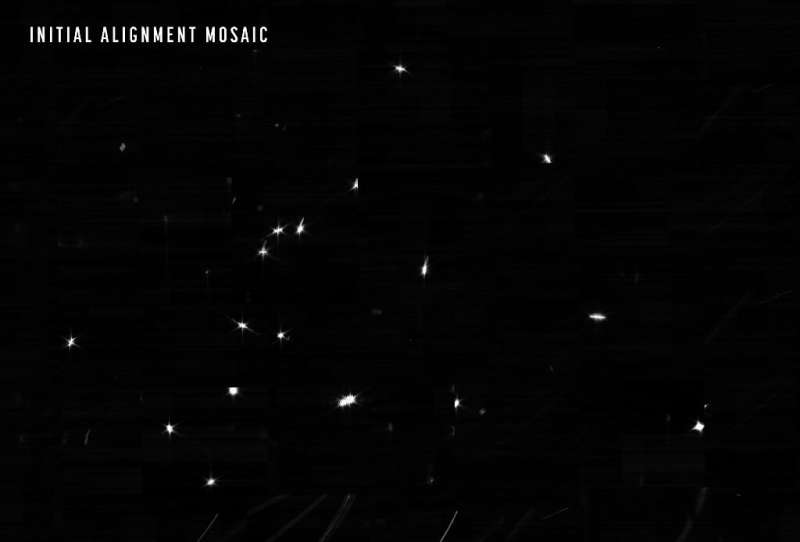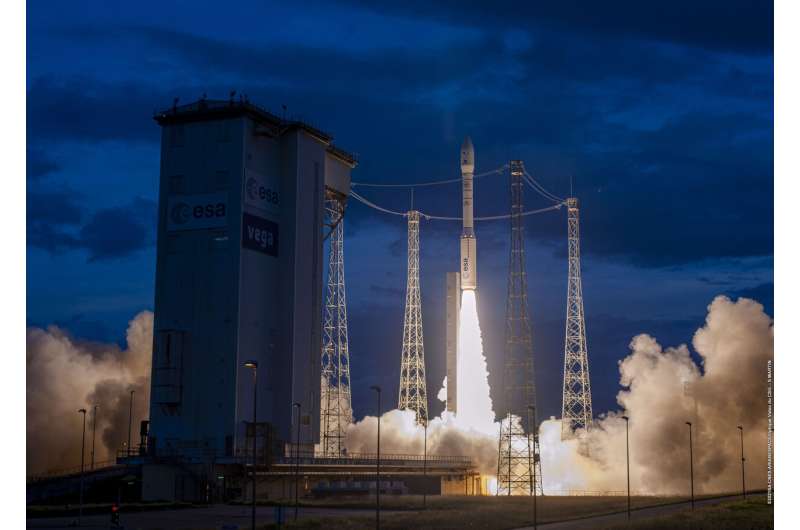
Copernical Team
Early findings from HERA telescope promise deeper understanding of the cosmic dawn
 All through history, humans have created and shared stories that ponder the creation of stars - what they are and how the first stars came to be. Now, with new results from the Hydrogen Epoch of Reionization Array (HERA), a radio telescope located at the South Africa Karoo Astronomy Reserve, MIT scientists are one small, but significant, step closer to understanding that history.
HERA rese
All through history, humans have created and shared stories that ponder the creation of stars - what they are and how the first stars came to be. Now, with new results from the Hydrogen Epoch of Reionization Array (HERA), a radio telescope located at the South Africa Karoo Astronomy Reserve, MIT scientists are one small, but significant, step closer to understanding that history.
HERA rese NASA Telescope Spots Highest-Energy Light Ever Detected From Jupiter
 The planet's auroras are known to produce low-energy X-ray light. A new study finally reveals higher-frequency X-rays and explains why they eluded another mission 30 years ago.
Scientists have been studying Jupiter up close since the 1970s, but the gas giant is still full of mysteries. New observations by NASA's NuSTAR space observatory have revealed the highest-energy light ever detected
The planet's auroras are known to produce low-energy X-ray light. A new study finally reveals higher-frequency X-rays and explains why they eluded another mission 30 years ago.
Scientists have been studying Jupiter up close since the 1970s, but the gas giant is still full of mysteries. New observations by NASA's NuSTAR space observatory have revealed the highest-energy light ever detected In Place at Rimplas
 Three abrasions and four sample cores later, the rover has finally departed the Seitah area and is embarking on the return leg of the crater floor campaign. One major difference between the "out" trip and this return trip is the pace of Perseverance's driving.
As we drove towards Seitah earlier in the mission, our average daily drive distance was shorter, in part because we were doing scie
Three abrasions and four sample cores later, the rover has finally departed the Seitah area and is embarking on the return leg of the crater floor campaign. One major difference between the "out" trip and this return trip is the pace of Perseverance's driving.
As we drove towards Seitah earlier in the mission, our average daily drive distance was shorter, in part because we were doing scie Advanced Space, USAF sign deal to collaborate on Cislunar Activities
 Advanced Space LLC., a leading space solutions company, has entered into a Cooperative Research And Development Agreement (CRADA) with the U.S. Air Force Research Laboratory (AFRL), Space Vehicles Directorate, and the Spacecraft Technology Division to share data collected from cislunar space through the CAPSTONE mission.
Advanced Space owns and operates the CAPSTONE mission going to the Mo
Advanced Space LLC., a leading space solutions company, has entered into a Cooperative Research And Development Agreement (CRADA) with the U.S. Air Force Research Laboratory (AFRL), Space Vehicles Directorate, and the Spacecraft Technology Division to share data collected from cislunar space through the CAPSTONE mission.
Advanced Space owns and operates the CAPSTONE mission going to the Mo Sols 3383-3384: Picking Our Way to the Pediment
 We are continuing our traverse towards the "Greenheugh pediment." We passed along this area on our detour to The Prow, and our sedimentologists have a long list of imaging wishes, features which caught their eyes on the initial pass through and which we now get the chance to really examine in detail as we skirt along the base of the pediment.
From today's vantage point, Mastcam and ChemCam
We are continuing our traverse towards the "Greenheugh pediment." We passed along this area on our detour to The Prow, and our sedimentologists have a long list of imaging wishes, features which caught their eyes on the initial pass through and which we now get the chance to really examine in detail as we skirt along the base of the pediment.
From today's vantage point, Mastcam and ChemCam Rocket Lab brings forward launch for earth imaging company Synspective
 Rocket Lab USA, Inc. (Nasdaq: RKLB), a global leader in launch services and space systems, has announced the launch window for a dedicated Electron mission for Japanese Earth imaging company Synspective. The 14-day launch window opens February 28th UTC and will lift-off from Rocket Lab's Launch Complex 1 in New Zealand. Originally slated to launch after Rocket Lab's next mission for another cust
Rocket Lab USA, Inc. (Nasdaq: RKLB), a global leader in launch services and space systems, has announced the launch window for a dedicated Electron mission for Japanese Earth imaging company Synspective. The 14-day launch window opens February 28th UTC and will lift-off from Rocket Lab's Launch Complex 1 in New Zealand. Originally slated to launch after Rocket Lab's next mission for another cust Rocket ready for record-setting role
 A modified version of China's Long March 8 carrier rocket is scheduled to make its debut flight in the coming weeks to transport 22 satellites into orbit, a designer said.
Chen Xiaofei, from the China Academy of Launch Vehicle Technology in Beijing, said on Wednesday that if the launch mission succeeds, it will set a record for the most spacecraft launched by a single Chinese rocket.
A modified version of China's Long March 8 carrier rocket is scheduled to make its debut flight in the coming weeks to transport 22 satellites into orbit, a designer said.
Chen Xiaofei, from the China Academy of Launch Vehicle Technology in Beijing, said on Wednesday that if the launch mission succeeds, it will set a record for the most spacecraft launched by a single Chinese rocket. The devil's in the detail
 Chaotic mounds, wind-sculpted ripples and dust devil tracks: this image shows a fascinating and otherworldly landscape near Hooke Crater in Mars' southern highlands.
The image was taken by the CaSSIS camera onboard the ESA/Roscosmos ExoMars Trace Gas Orbiter (TGO) on 1 February 2021, and shows part of Argyre Planitia, centred at 46.2 S/318.3 E.
This type of scenery is similar to 'cha
Chaotic mounds, wind-sculpted ripples and dust devil tracks: this image shows a fascinating and otherworldly landscape near Hooke Crater in Mars' southern highlands.
The image was taken by the CaSSIS camera onboard the ESA/Roscosmos ExoMars Trace Gas Orbiter (TGO) on 1 February 2021, and shows part of Argyre Planitia, centred at 46.2 S/318.3 E.
This type of scenery is similar to 'cha Webb telescope spots its first star—and takes a selfie

Star light, star bright, the James Webb Space Telescope has seen its first star (though it wasn't quite tonight)—and even taken a selfie, NASA announced Friday.
The steps are part of the months-long process of aligning the observatory's enormous golden mirror that astronomers hope will begin unraveling the mysteries of the early Universe by this summer.
The first picture sent back of the cosmos is far from stunning: 18 blurry white dots on a black background, all showing the same object: HD 84406 a bright, isolated star in the constellation Ursa Major.
ESA's Vega rocket marks ten years with countdown to more powerful successor

Ten years ago today, ESA opened a new era of independent access to space with the inaugural flight of its small launcher Vega. Flying from Europe's Spaceport in French Guiana, Vega has gone on to earn a reputation for precision and versatility in anticipation of a more capable version, Vega-C.
Placing medium-sized satellites into the low Earth polar orbits that are ideal for scientific and Earth observation missions—about 1430 kg to 700 km—is Vega's trademark capability. But the vehicle has also delivered an ESA science mission to deep space—the gravitational wave detector demonstration mission, LISA Pathfinder—and followed the equatorial flight path needed for an experimental IXV "lifting body" payload that paved the way for a European launchpad-to-runway space transportation service, with ESA's uncrewed Space Rider vehicle.

































